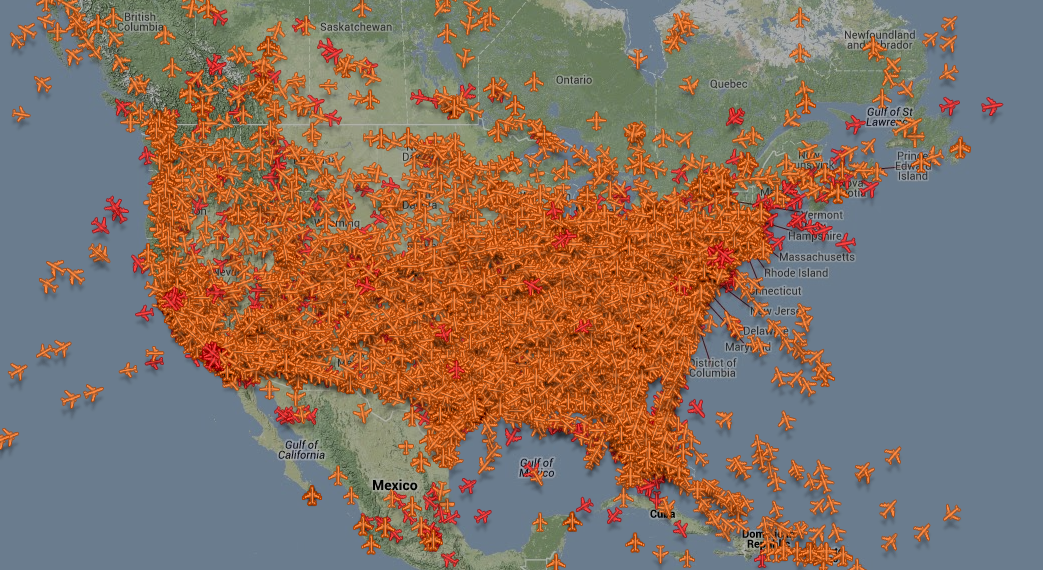Okay, we’re late again. But surely you can forgive us this week after all that Turkey we had to eat. Hang on a minute, you say, aren’t you guys based in Australia? Correct, but we’ve got so many followers from the USA, we’re bound to talk turkey! Anyhow, here are our airport topics from this (errr, last) week:
- Thanksgiving
- China’s $1B airport flop
- Green light for car service at SFO
- Winter weather cancellations
- E-ciggies at LHR
Okay, we started it, so we should better back it up. Thanksgiving. A big thing for our friends in the U.S., and understandably, this massive holiday is leading to airport congestions. So it therefore was not surprising to read quite a few articles about how to avoid any stress, then of actual delays, and as always, after the whole thing, a couple dubious slightly weird stories saw the light of day (did you see that Facebook post of that guy talking about that woman in 5a, for example?). So overall, it’s the same every year. More or less. Moving on.
China. Oh China. The Washington Post published a harsh story about the newly opened, super-sized $1 billion terminal 3 at Shenzhen International Airport (SZX). As to the story, the terminal hailed as a true wonder of Chinese development and a serious notch in the country’s hope to become a global player in the travel market. But the 4.3 million square-foot terminal doesn’t actually provide services to some of the world’s biggest draws. Rather, it flies mostly local. The one flight to the U.S. goes to Alaska, the one flight to Europe to Helsinki. Hm.
A much better story reached us from San Francisco this week where, according to CNBC, it has been stop and go for car- and ride-sharing companies such as Lyft, uberX, FlightCar and RelayRides at San Francisco International Airport (SFO), but a new agreement has given one business a green light to operate legally at the airport. That’s good news for fans of RelayRides, a San-Francisco-based peer-to-peer car-sharing company that since August has provided departing passengers free airport parking and car washes, while offering arriving visitors great rental deals on those cars. According to the report, the service has agreed to be classified as an off-airport rental business, meaning that, just like any other off-site car rental company, it will abide by state and airport permitting, licensing and congestion-reduction rules. It also will pay SFO 10 percent of gross revenues from its airport-related transactions, plus a $20 per-transaction fee, said an airport spokesman in the article.
And we’re staying in the U.S. where next to the Thanksgiving craze, a winter storm also played against the plans of thousands of travellers at Dallas-Fort Worth International Airport (DFW). NBC News wrote that with ice expected Sunday, more than 300 flights were canceled Sunday at the airport. DFW Airport told the news station that there are some people that will have to spend the night in the terminal, but that many were able to get to hotels because the flights were canceled earlier in the day.
And to finish the week off, some great news for you e-smokers out there. The British Telegraph newspaper reported this week that on Monday an electronic cigarette manufacturer opened a 323 square foot (30 square metre) “vaping zone” in the International Departures Lounge at Heathrow Terminal 4 (LHR), next to luxury brand and duty-free shops. It is currently the only indoor area in which passengers can smoke e-cigarettes. The article also (re-)informed us that e-cigarettes do not produce smoke but instead emit a similar-looking vapour, which may mean that passers-by mistake those using them for standard smokers. The British Medical Association has advised that e-cigarettes be included in the ban on smoking in public spaces, because they may make “cigarette use seem normal in public and at work.”
That’s all for now – safe travels!
[Photo showing actual flights over North America, courtesy of Planefinder.net]


Seems the author has a low threshold for what a “flop” entails. Those with a knowledge of Pearl River Delta (PRD) geography knows that Shenzhen is between Guangzhou and Hong Kong. The latter a well-established “long-range” international hub, with Guangzhou and up-and-coming player with success linking mainland China flights to international flights bound to southeast Asia and Australia. Shenzhen will continue to mainly serve as a domestic destination in the heart of the PRD’s manufacturing area, with regional international flights to southeast Asia, Taiwan, and others. The Airport has an important role to serve, but to call it a flop because it isn’t Hong Kong is misleading, and strikes of a bias to find fault in any new development in China.